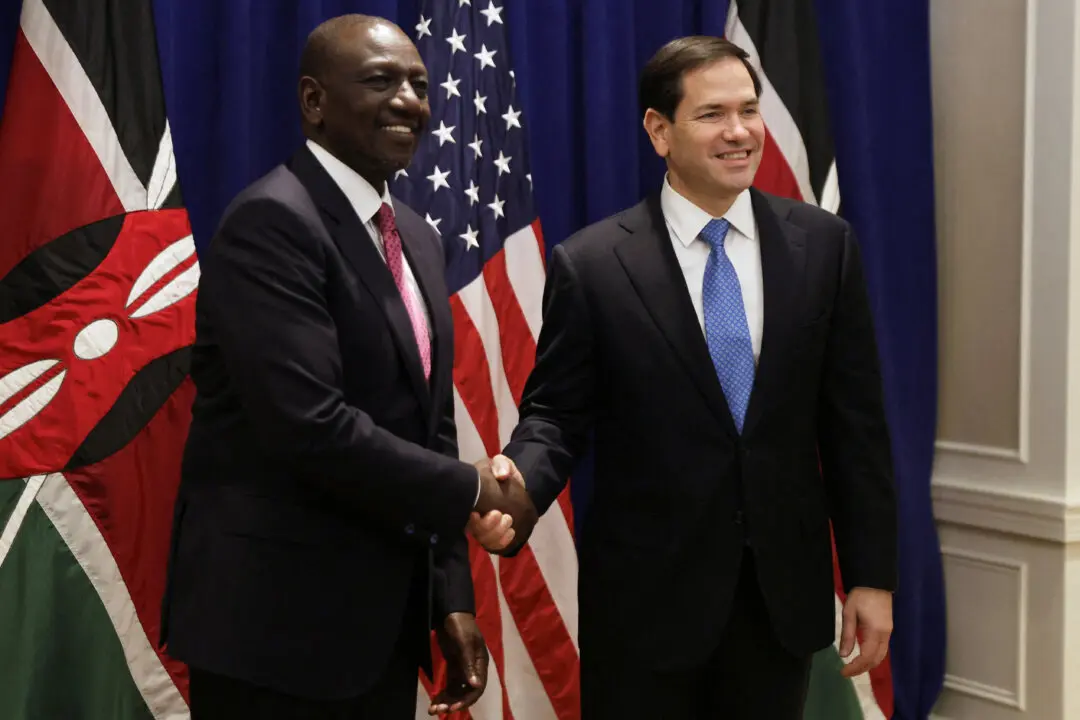Former health secretary Matt Hancock on Wednesday gave evidence for the sixth time to the long-running UK Covid-19 Inquiry, with its focus turned to the social care sector.
The public inquiry has previously heard there were more than 43,000 deaths said to have involved the virus, including deaths “with COVID” as well as those “from COVID,” in care homes across the UK between March 2020 and July 2022.
Bereaved people whose loved ones died in care homes, some of whom had the virus wrongly put down as their cause of death, have called for truth and accountability from witnesses appearing before the social care module of the probe, which began this week.
When asked by Counsel to the Inquiry Jacqueline Carey, KC whether he thought the government had succeeded in putting a “protective ring” around care homes—as he claimed had been the aim in 2020—Hancock replied, “We tried.”
Carey pointed to an anonymous witness statement given to the inquiry, saying: “One person in particular said he [Hancock] blatantly lied about the situation with care homes, there was no blanket of protection. We were left to sail our own ships. He wasn’t heartfelt. He had no understanding or appreciation of the challenges care homes face, pandemic or not, it felt like we were the sacrifice, a cull of older people who could no longer contribute to the society.”
Hancock said it was “not helpful” for the inquiry to “exchange brickbats,“ but went on: “I’ve been through everything that we did as a department, a big team effort, and we were all pulling as hard as we possibly could to save lives—that’s what I meant by saying that we tried to throw a protective ring around [them].”
Cummings and Others ‘Caused Problems’
He added that he and others were “trying to do everything that we possibly could” in “bleak circumstances” at a time when “I also had [former government adviser] Dominic Cummings and a load of people causing all sorts of problems for me, and I had COVID.”An anonymous civil servant was quoted by the barrister representing bereaved families at the inquiry earlier this week as having called the death toll a “generational slaughter” in care homes.

The “incredibly contentious” policy of discharging elderly patients from hospitals to care homes in the early stages of lockdown was “the least-worst decision” available at the time, Hancock said, adding that “nobody has yet provided me with an alternative that was available at the time that would have saved more lives.”
When the World Health Organisation (WHO) declared a pandemic in 2020, elderly hospital patients were rapidly discharged into care homes in a bid to free up beds and prevent the NHS from being overwhelmed.
However, there was no policy in place requiring the discharged patients to be tested before admission, or for asymptomatic patients to isolate, until mid-April.
Hancock, who resigned from the Conservative government in 2021 after CCTV footage emerged of him breaking social distancing guidance by having an affair with a colleague, has given evidence to the inquiry for each of its modules.
The inquiry heard he said in his witness statement that NHS England had “insisted” on the policy, and that while he did not take the decision himself, he took responsibility for it as then-health secretary, describing it as “the least bad option.”
While the judges said it was necessary to discharge patients “to preserve the capacity of the NHS,” they found it was “irrational” for the government not to have advised that asymptomatic patients should isolate from existing residents for 14 days after admission.
Hancock told the inquiry that not advising care homes to isolate returning residents without symptoms was a “mistake,” but in line with clinical guidance at the time.
Asked about when NHS bosses were instructed to begin the discharge process on March 17, 2020, Hancock said officials were “pushing very hard” to get more personal protective equipment (PPE) into care homes, although messaging on masks was “conflicted.”
Hancock also said he found the 2022 High Court ruling “very frustrating,” as “nobody asked me” to be involved, claiming the outcome would have been different had he given evidence.

The former health secretary’s written statement said while there had been “widespread concern” that patients being discharged from hospital were the main source of infection in care homes, “we learned in the summer of 2020 that staff movement between care homes was the main source of transmission.”
‘Truly Ghastly’
When asked about the banning of care home visits, which led to some people unable to be with their loved ones when they died and to distressing “window visits,” where elderly people with dementia sometimes sobbed in confusion, Hancock said, “Some of the things people went through are truly ghastly.”The former health secretary said that one of his own relatives had died in a care home, but did not divulge further details.
He said he considered visitor restrictions “a reasonable measure,” but said there should be more “nuance” in future.
Hancock said he had become concerned about the possibility of asymptomatic transmission because of reports coming out of China from late January 2020, and was trying to get Public Health England to consider this in its planning and advice.
Quizzed on whether discharged care home residents ought to have been placed in isolation, Hancock said that in his opinion, all care homes should have facilities for isolating patients in them as a condition of their funding, as well as having to keep PPE on site, for when “the next pandemic” hits.
He and Whitty Agreed on DNRs
Asked about the use of Do Not Resuscitate (DNR) notices which were placed on many elderly, disabled, and vulnerable patients during lockdown, often without the knowledge or consent of individuals and their families, Hancock said their use had not featured in the Coronavirus Act.Hancock said that he and Chief Medical Officer Professor Sir Chris Whitty were “absolutely as one” on their belief that the best person to decide on the appropriateness of a DNR is “the doctor by the bedside and not a national policy.”

The Covid Bereaved Families for Justice (CBFFJ) group has written to inquiry Chairwoman Baroness Heather Hallett to express their concern at some “key decision-makers” who are not expected to be called to give evidence in this module, including former Prime Minister Boris Johnson and Lord Stevens.
A CBFFJ spokesperson told PA that Hancock had shown “utter contempt for bereaved families,” with his latest appearance “full of excuses and completely devoid of accountability.”
They added: “We’ve waited years for this moment, hoping for truth. What we got was finger-pointing and evasion.”
Module six of the inquiry is expected to run until the end of July.







